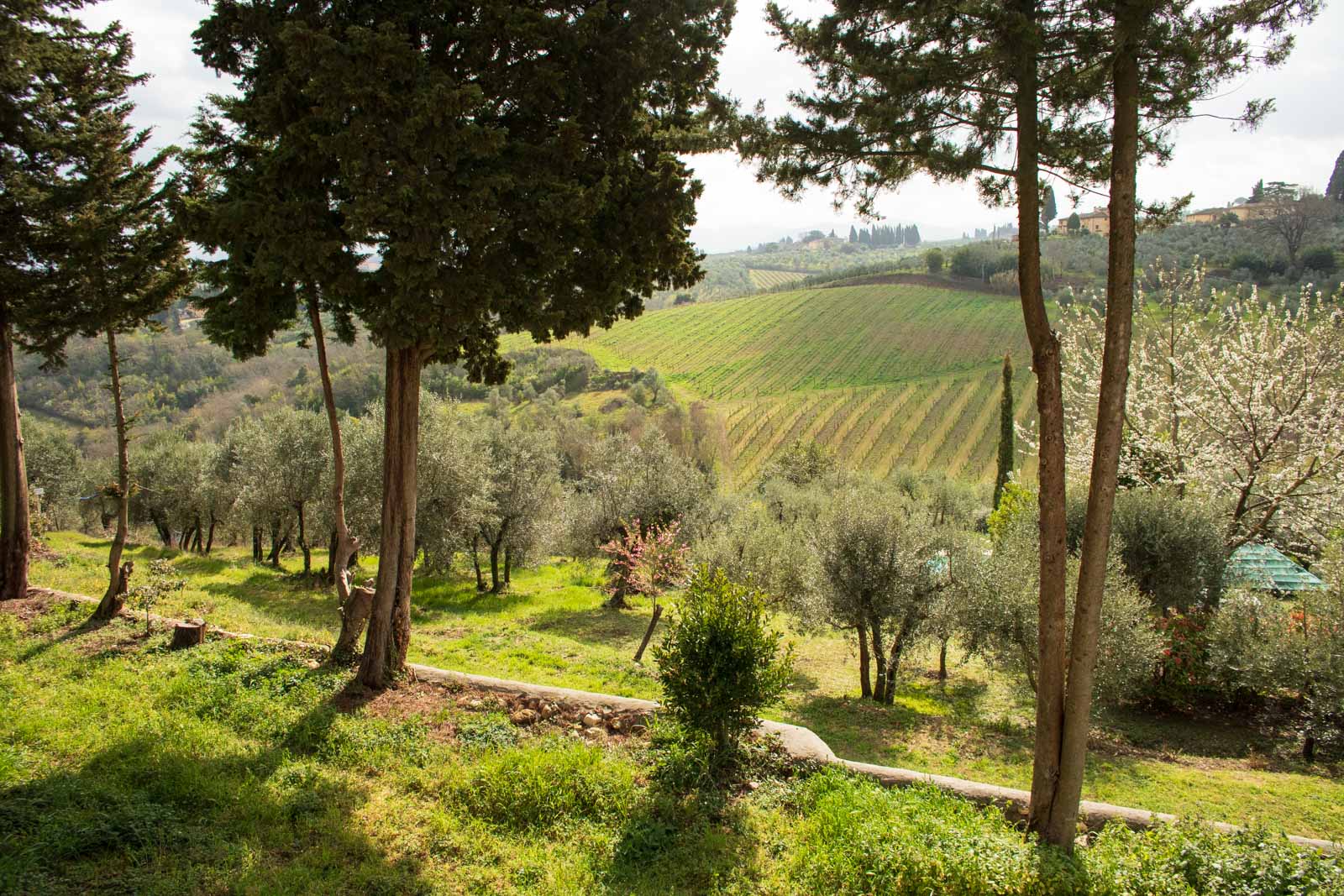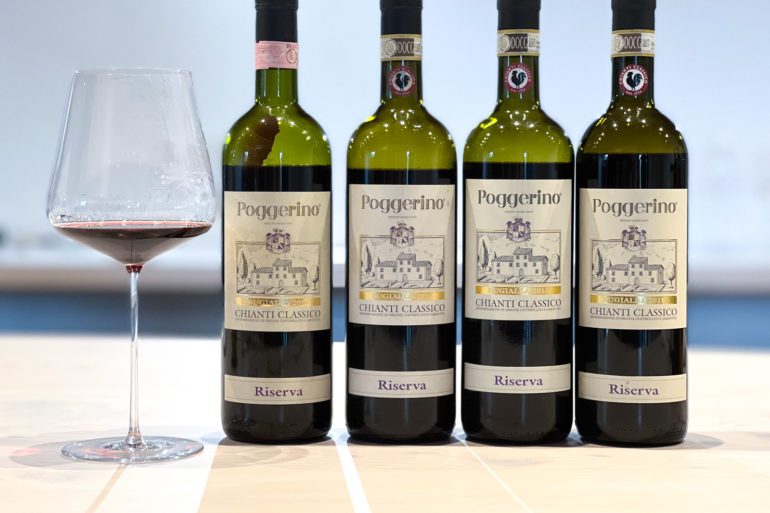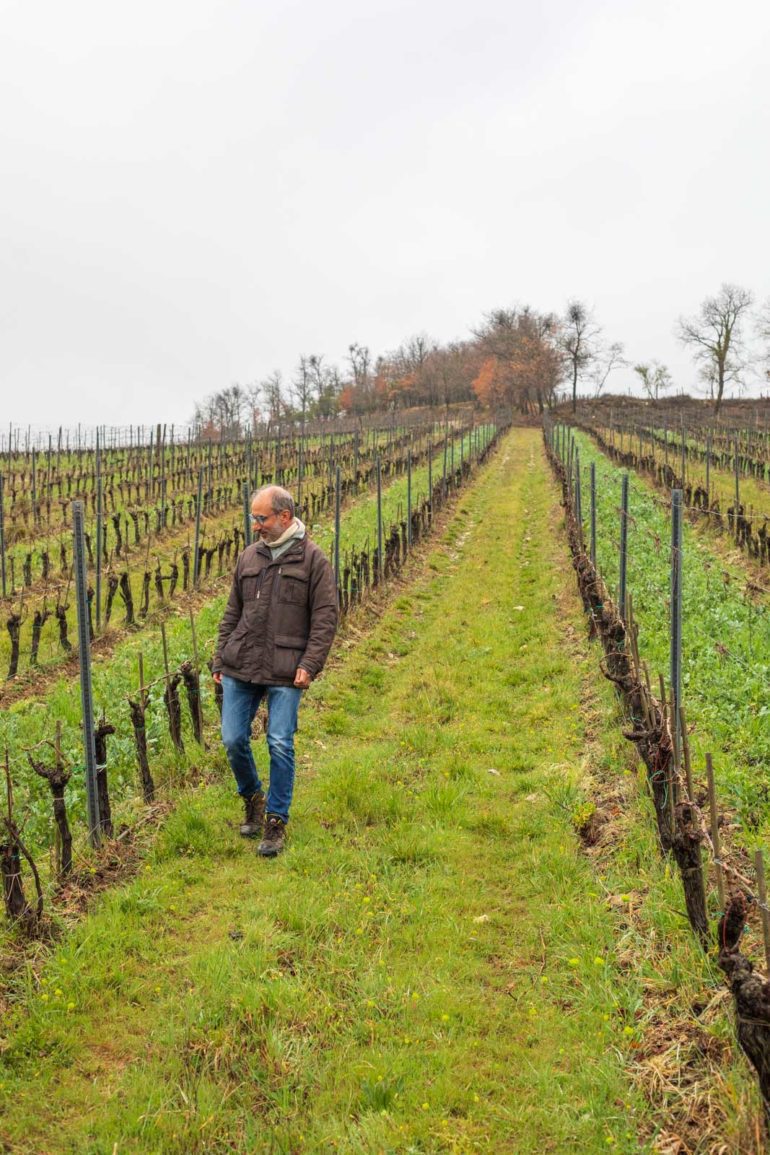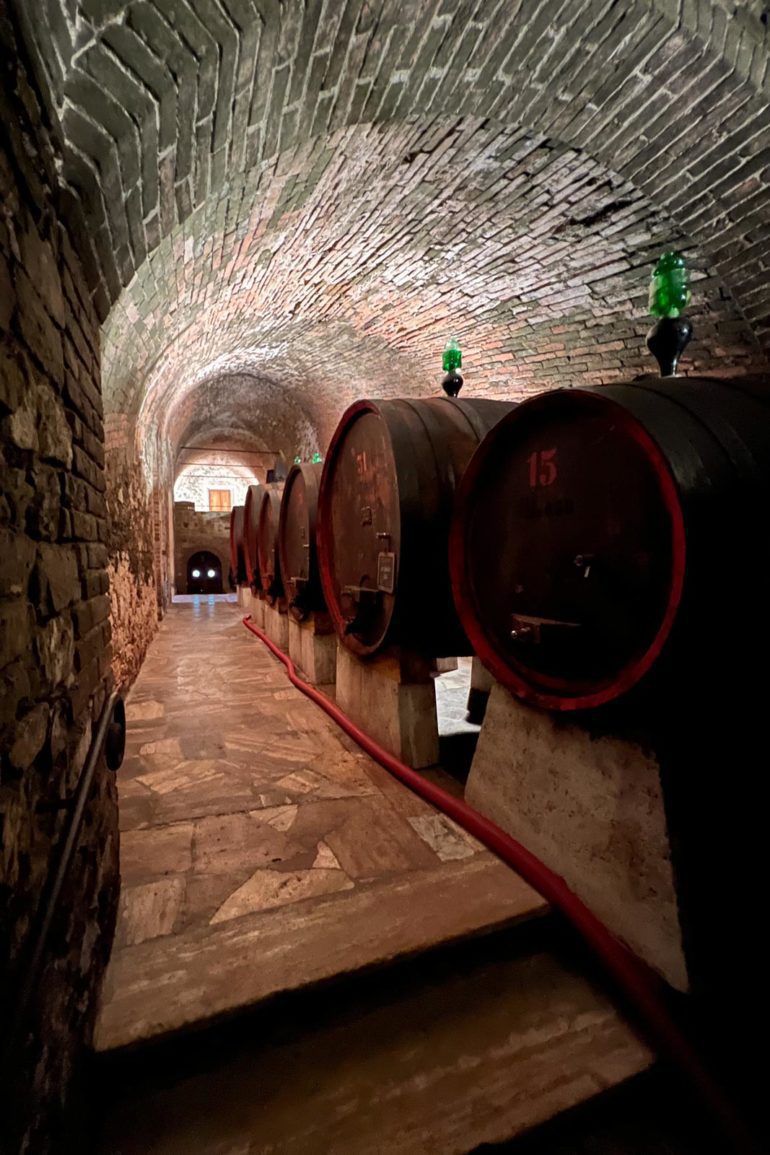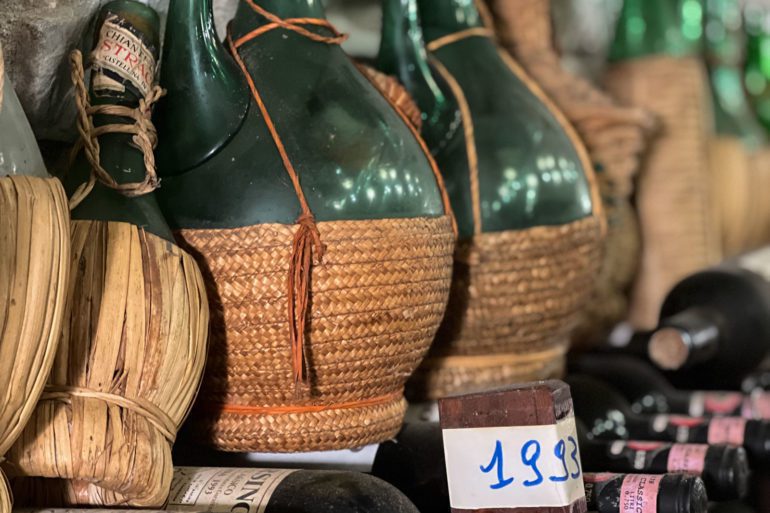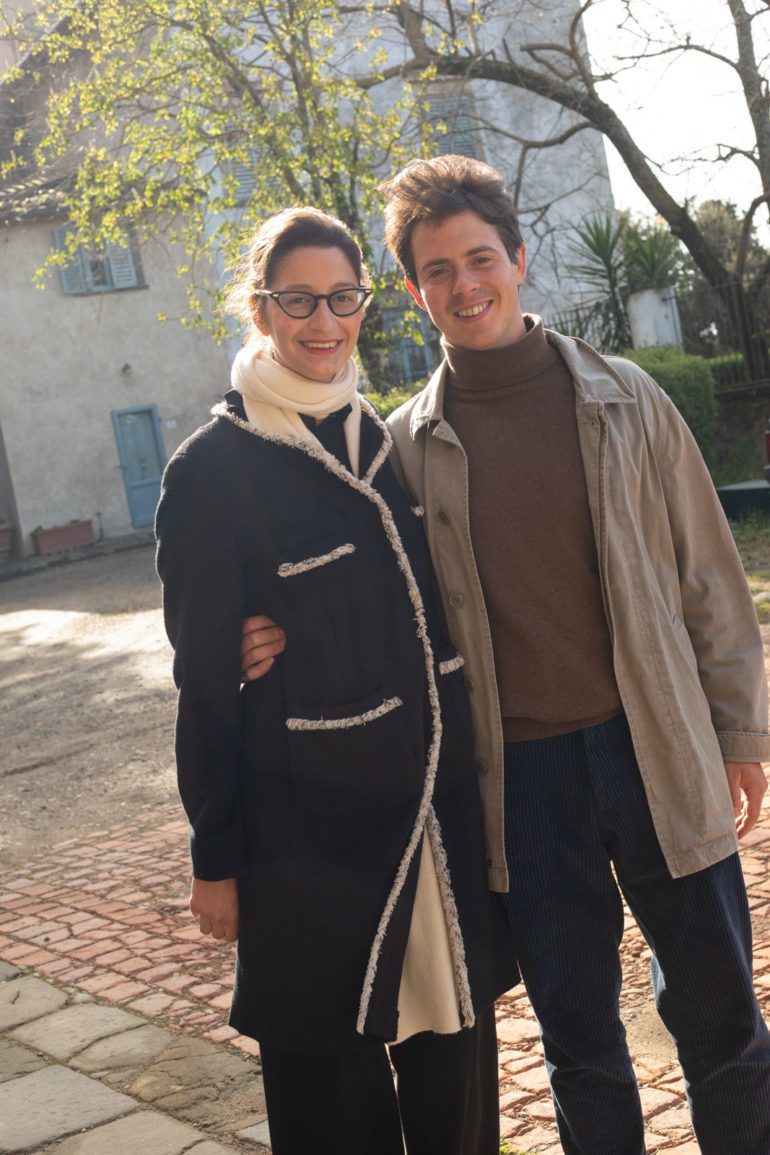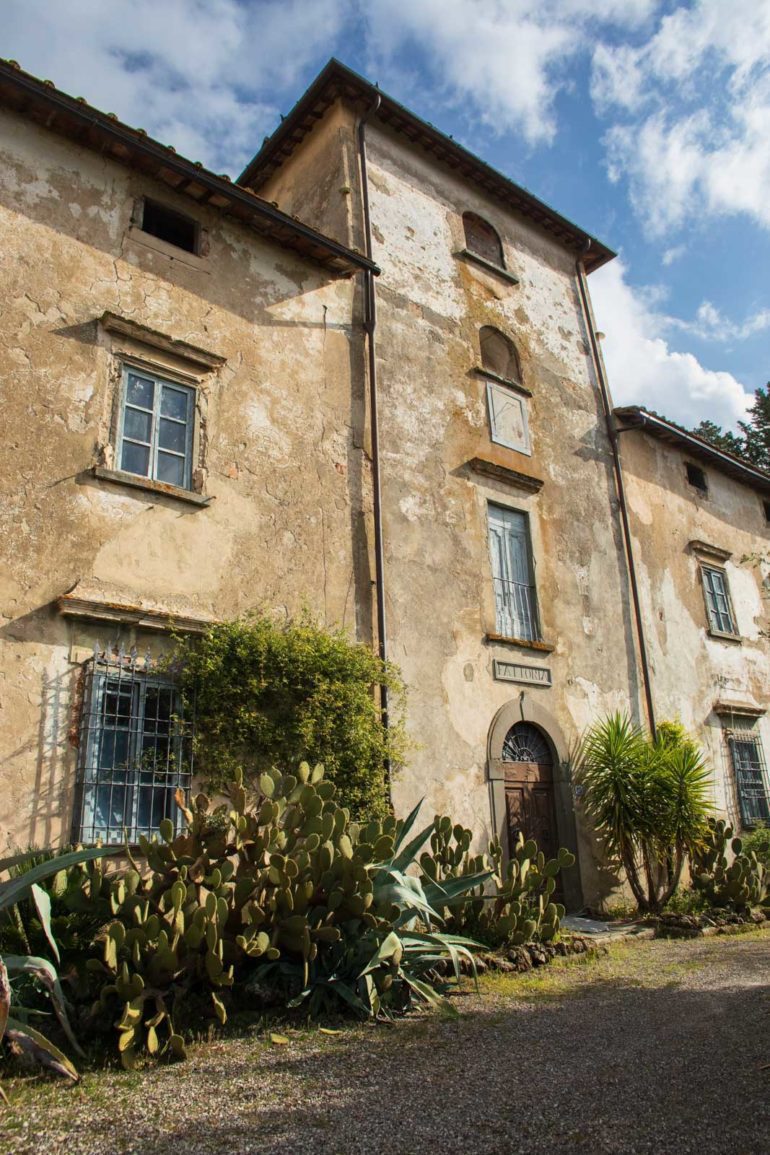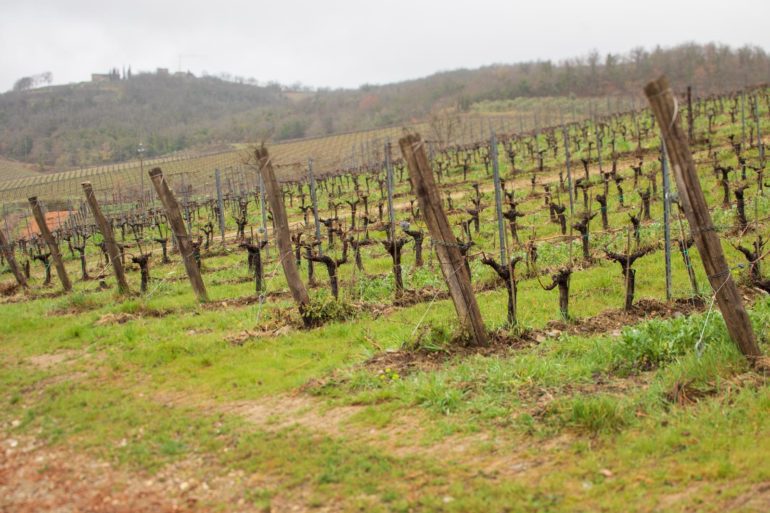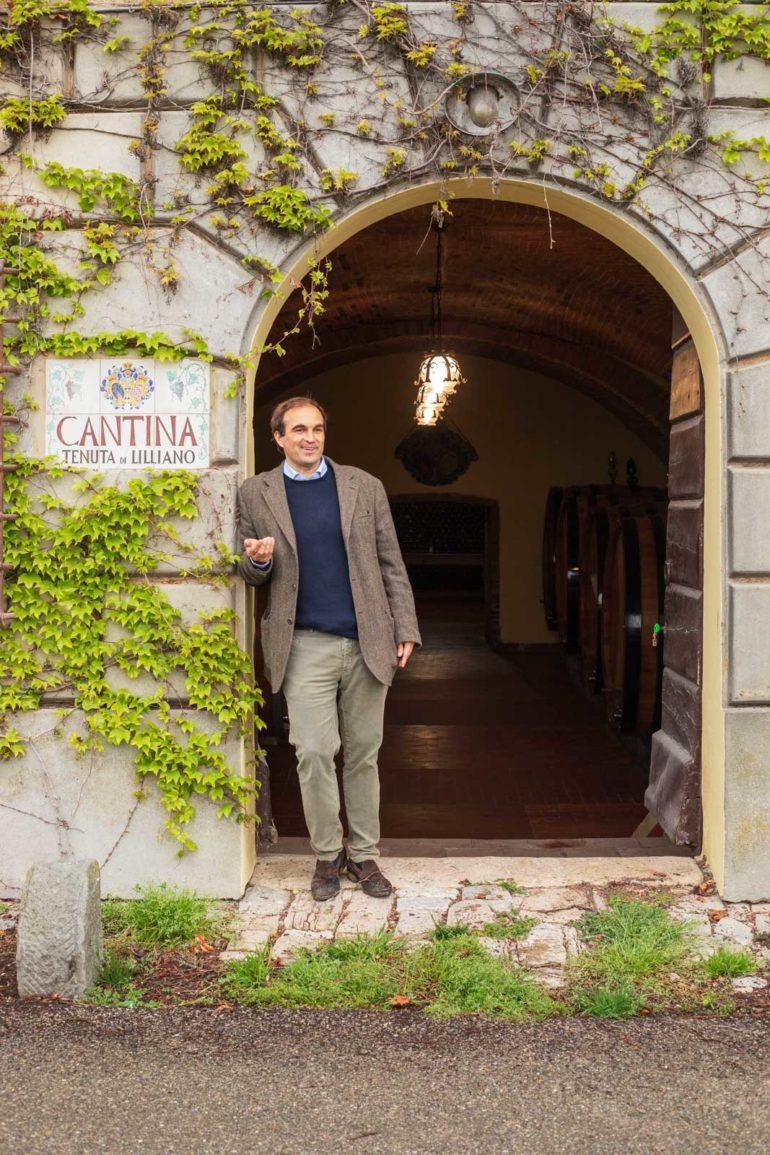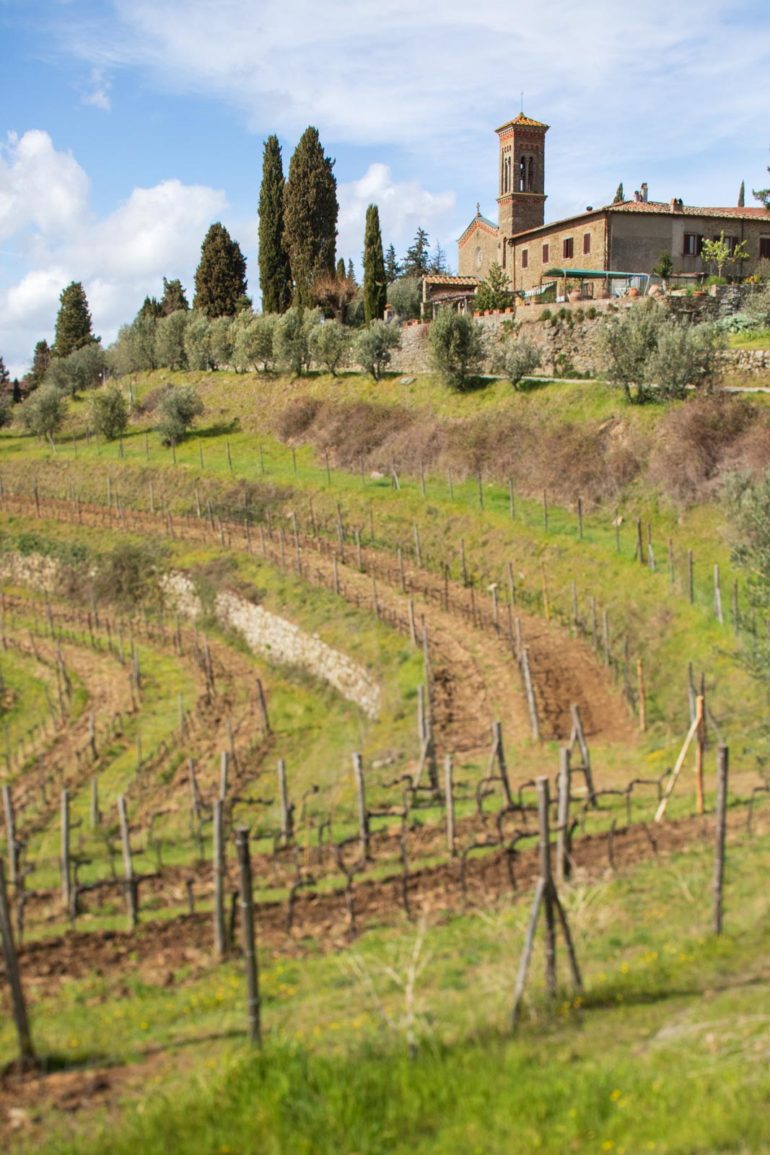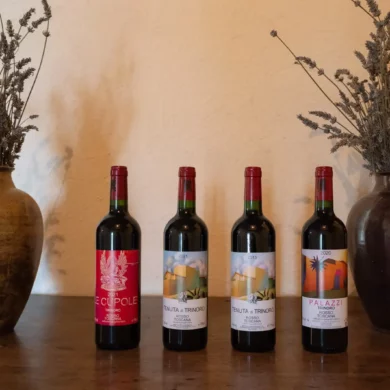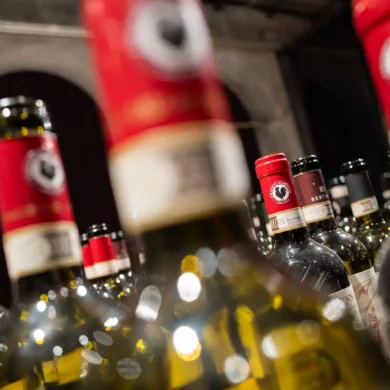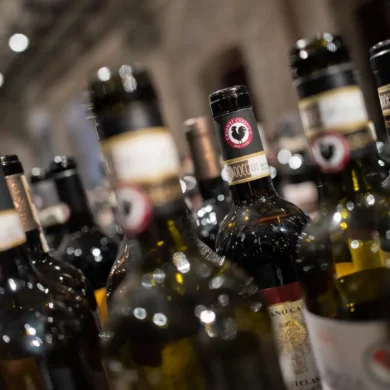Welcome to our first of five tasting reports from Tuscany. With a green light to travel again and some residual funds from our subscription drive (thank you, dear reader), I traveled back to Italy in late March and early April with a dedicated focus on figuring out the current state of affairs with Tuscany’s wine scene. Easily the most dynamic appellation is Chianti Classico DOCG, and it requires quite a bit of explaining. You can get caught up on our special coverage of this region with these articles:
Chianti Classico Coverage
- Understanding the History of Chianti Classico
- First-Taste Guide to Chianti Classico
- Are Terroir-Driven Wines the Future of Chianti Classico?
- Tasting Report: Chianti Classico Annata (you are here)
- Tasting Report: Chianti Classico Riserva
- Tasting Report: Chianti Classico Gran Selezione
In addition to tasting wines in-person at 12 different wineries that I selected myself, I also solicited samples and purchased wines stateside to get as complete a picture as possible of this moment in Chianti Classico. In total, I have tasted 82 Chianti Classico wines over the last six months from a variety of vintages and categories. Mind you, there are 241 wineries making Chianti Classico wines, and that does not include some of the sub-brands and offshoots that have arisen in recent years. My aim was never to taste them all, but rather to inform an overall impression of the past, present and future, particularly at the wineries that are at the forefront of change.
My initial instinct was to compile a single report, but given the major differences in approach and philosophy behind the region’s three main categories, I have opted to break the Chianti Classico tasting reports into three pages, starting with the entry-level, immediate-release wines known simply as Chianti Classico. Two tasting reports on Montalcino will arrive later this summer.
Here is a quick reminder on the category from our First Taste Guide:
Annata bottlings are simply labeled as “Chianti Classico” and require the least amount of aging before release (no sooner than October 1 of the year following harvest). Annata means “vintage” in Italian, so this is the wine that’s released every year, regardless of conditions. They’re often very well priced, and from top-tier producers such as these, can age for more than 10 years despite their “entry-level” status.
Top Chianti Classico Wines
My metric for a successful Chianti Classico is fairly straightforward: how well does it show the true profile of Sangiovese, and how easy-to-drink is the wine? Do not read this last part as “simple,” for the best annata Chianti Classico wines can be wonderfully complex and detailed. What we are looking for is immediate pleasure, both in terms of aromas and palate presence, and in terms of not requiring years to age and mature into an ideal form. We’ll save that thrill for the Riserva and Gran Selezione. Chianti Classico annata wines ought be to versatile at the table as well, accommodating a wider variety of food pairings.
Here are the wines that stood out to me as the most interesting. You can also view a refresher on How We Rate Wine to explain our star system.
Top Pick: Cigliano di Sopra Chianti Classico (2020 and 2016)
This new winery is the one to watch. Based in the UGA of San Casciano in Val di Pesa, Cigliano di Sopra is led by a talented couple whose work experience includes stints at Fontodi and Isole e Olena, as well as in California and Oregon at Domaine de la Cote and Evening Land. Maddalena Fucile and Matteo Vaccari are looking to put their overlooked corner of Chianti on the map, and their 2020 Chianti Classico (★★★★★) does that brilliantly with very precise acidity, delectable fruit and a salty finish that feels unique to the DOCG. Their first vintage, the 2016 Chianti Classico (★★★★★) is a monumental “rookie effort,” and has aged very well, with rich savoriness, walnut-like tannins, and a fabulous mineral finish. What Fucile and Vaccari are offering is something different yet quintessentially true to the area.
100% Sangiovese
Poggerino Chianti Classico (2020)
It is rare for me to visit a winery and feel compelled to assign top marks to a majority of the wines, but winemaker Piero Lanza at Poggerino left me little choice. He is a master of Sangiovese in all its forms: red, rosé and yes, even sparkling. While his “Bugialla” Riserva is the crowning achievement of Chianti Classico in my book, his two Chianti Classico wines are worth fawning over, too. The 2020 Chianti Classico (★★★★★) is succulent and inviting at every turn, at times recalling raspberries, red tea and hazelnuts to complement Sangiovese’s familiar cherry-citrus-savory trio. His 2019 Chianti Classico called “Nuovo” (★★★★ 3/4) is raised in a concrete egg, which he feels lends better circulation to the élevage. But on the day of my visit, the aromas were closed, which Piero agreed was the case. I don’t mind this one bit: it is a sign of a living wine that is still moving, shifting and settling. It’s basically saying “come back another time, I’ll be ready.” Faint aromas aside, “Nuovo’s” palate presence was clear and flawless. A wine to return to.
100% Sangiovese (both wines)
Istine Chianti Classico Vigna Cavarchione (2019)
Istine Chianti Classico Vigna Casanova Dell’Aia (2019)
Istine Chianti Classico Vigna Istine (2019)
Angela Fronti’s upside-down product mix (for now) focuses on three single-vineyard Chianti Classico (each 2019 version rated ★★★★★ in my book), and while these wines will not be allowed to carry the Radda or Gaiole UGA designation as annata wines, they really oughta. This is a superb place to dive into “Chianti Classico terroir studies” and comparisons without the wildcard of lengthy oak aging in the way.
See my specific notes on these wines in our article Are Terroir-Driven Wines the Future of Chianti Classico? I will only add that we often don’t think of Chianti Classico as a “mountain wine,” but these beautiful wines have more similarities to the wines of Valle d’Aoste and Valtellina than you might think, and there is good reason for that. Radda is mountainous.
100% Sangiovese
Fèlsina “Berardenga” Chianti Classico (2019)
In the southern part of the Chianti Classico zone you will find the Castelnuovo Berardenga UGA, where the land opens up and the Ombrone River flows. Third-generation winemaker Giovanni Poggiali oversees Fèlsina, an estate that was an early adopter of varietal Sangiovese well before the Consorzio got on board with the idea. He told me that, as early as the 1960s, his family was toying with the idea of showcasing and marketing the terroir of Castelnuovo Berardenga through their wines. Famed wine writer Luigi Veronelli even encouraged the idea, which now seems well ahead of its time.
Fèlsina’s Chianti Classico annata (★★★★★) and Chianti Classico Riserva have both carried “Berardenga” as their vanity name for many vintages. That might get a little confusing now with the new UGA guidelines, but who cares? The annata is simply glorious, with an impeccable balance of vibrancy and depth, muskiness and floral quality, as well as bitterness and sweetness. I only wish the “Berardenga” Riserva, the single-vineyard “Rancia” Riserva, and the “Colonia” Gran Selezione were as clear and as focused as the entry-level wine; all carry a little too much oak-influence for my taste.
100% Sangiovese
Villa Calcinaia Chianti Classico (2018)
Another favorite producer in Chianti Classico is Villa Calcinaia, an expansive and beautiful estate in the Montefioralle UGA. There, proprietor and winemaker Sebastiano Capponi makes structured, nuanced and powerful wines. He also has an experimental streak that keeps things interesting. (Varietal Mammolo anyone?)
Villa Calcinaia’s 2019 (★★★★ 3/4) and 2018 (★★★★★) Chianti Classico underline the classic part, as in this is classic Chianti Classico. There is the taunt body and blood-orange citrus flavor, as well as an effortless savory quality that speaks to Sangiovese. There is also a silky quality that perhaps comes from the Canaiolo. Say what you will about the greatness of Sangiovese, but I still love the native-grape blends from Chianti Classico.
Give this wine an extra year in bottle, if you can, for it really synthesizes nicely with the age.
90% Sangiovese, 10% Canaiolo
Montesecondo Chianti Classico (2018)
Like Cigliano di Sopra, the Montesecondo winery is also in the San Casciano in Val di Pesa UGA. Led by winemaker Silvio Messana, the ethos here is firmly in the natural wine camp, with biodynamic principles applied throughout the operation, and a lighter touch of sulfur dioxide at bottling.
The 2018 Montesecondo Chianti Classico (★★★★ 3/4) is a vastly different expression of Chianti Classico: you’ll find that lovely cherries-and-citrus-like quality that speaks of Sangiovese, but a wild herbal flavor as well, perhaps in lieu of Chianti Classico’s typical meatiness. Up to 30% of this wine can be whole-cluster fermented, depending on the vintage, which lends a little snappiness and textural prickliness to the wine.
90% Sangiovese with remaining 10% blending of Canaiolo and Colorino.
2018 Fattoria Rodáno Chianti Classico
If you were to plot on a continuum all of the wines made in Chianti Classico based on their degree of savory aromas and flavors, Fattoria Rodáno would consistently land on the far end of the spectrum. Winemaker Enrico Pozzesi’s Chianti Classico (★★★★ 3/4) carries all of the hallmarks of the region’s wines, but with just a little twist here and there. The sour cherry tones seem darker. The orange-like citrus character of the acidity is sharper (“grapefruit citrus?” I scribbled in my notebook). And the tannins seem to melt on the finish. Despite the overall wildness to the aromas and flavors, I found the annata at Rodáno to be among the most pleasant and easy-to-drink of all the Chianti Classico I tasted.
90% Sangiovese, 10% Canaiolo and Colorino
Tenuta di Lilliano Chianti Classico (2019)
Consistently, I found the wines of the Castellina in Chianti UGA to be among the most savory and coarse in their youth. My feeling is that they often benefit from an added year in bottle, even at the annata level. This principle was most clearly put on display at Tenuta di Lilliano, a hidden gem of a winery that takes its name from a small hamlet where it resides. I got to taste their 2020 (★★★★ 1/2) and 2019 Chianti Classico (★★★★ 3/4) side by side, and while comparing those two vintages is not easy, it was clear that the wines benefit from a year of settling. The 2020 was downright hyperactive, while the 2019 was already shifting gears into an easy state of grace where I could better process its minty, spicy and mineral character. There is a bit of Merlot in this wine, but it is not domineering (perhaps it lends to the spiciness). This wine still predominantly speaks of the primacy of Sangiovese, and like at neighboring Rodáno, the acidity profile here feels a little sharper than elsewhere in Chianti Classico, a thread I’d like to follow in the future as the UGA system is fine-tuned and (hopefully) expanded to the annata category. Could that be a hallmark of Castellina? Let’s find out.
90% Sangiovese, 5% Colorino, 5% Merlot
Villa di Geggiano Chianti Classico (2017)
Like Fèlsina, this under-the-radar estate lies in the Castelnuovo Berardenga UGA. Brothers Andrea and Alessandro Boscu Bianchi Bandinelli have family roots at the property stretching back to 1527. They manage the estate today with Alessandro tending to the winemaking process. If this brilliant, somewhat smoky version of Chianti Classico — the 2017 (★★★★ 3/4) — is any indication, I’d like to visit their estate next time I’m in the area. The wine broods like a Riserva, taking its sweet time to open up and reveal its details, but it carries the tannins and fresh acidity one would want in an annata.
100% Sangiovese
Other Noteworthy Chianti Classico to Seek Out
- 2018 Caparsa Chianti Classico – (★★★★ 3/4)***
- 2018 Istine Chianti Classico – (★★★★ 3/4)***
- Recommended First-Taste to Chianti Classico. See my notes on Caparsa and Istine’s wines by visiting the article.
- 2020 Monteraponi Chianti Classico – (★★★★ 3/4)
- 2019 Badia a Coltibuono Chianti Classico – (★★★★ 3/4)
- 2016 Piemaggio Chianti Classico – (★★★★ 3/4)
- 2019 Isole e Olena Chianti Classico – (★★★★ 1/2)
- 2019 Riecine Chianti Classico – (★★★★ 1/2)
- 2019 Cultusboni “Colmaia” Chianti Classico – (★★★★ 1/2)
- 2019 Quercia al Poggio Chianti Classico – (★★★★ 1/2)
Image captions (all images ©Kevin Day/Opening a Bottle): The vineyards at Cigliano di Sopra (top); wines at Poggerino; Poggerino’s winemaker Piero Lanza in his vineyard in Radda; the cellar at Fèlsina; historic “fiasco” bottles at Caparsa; Maddalena Fucile and Matteo Vaccari of Cigliano di Sopra; the estate at Cigliano di Sopra; vineyards in Radda; Alessandro Ruspoli of Tenuta di Lilliano; Vineyards in the Lamole UGA.
Note: My travels through the Chianti Classico region were greatly supported logistically and financially by the Consorzio Vino Chianti Classico, who transported me to each winery and covered accommodation costs. Without that support, the trip would have never happened. However, the wineries were selected by me out of editorial consideration, and no compensation was involved for any of this work. Opinions are exclusively my own. Learn more about our editorial policy.

